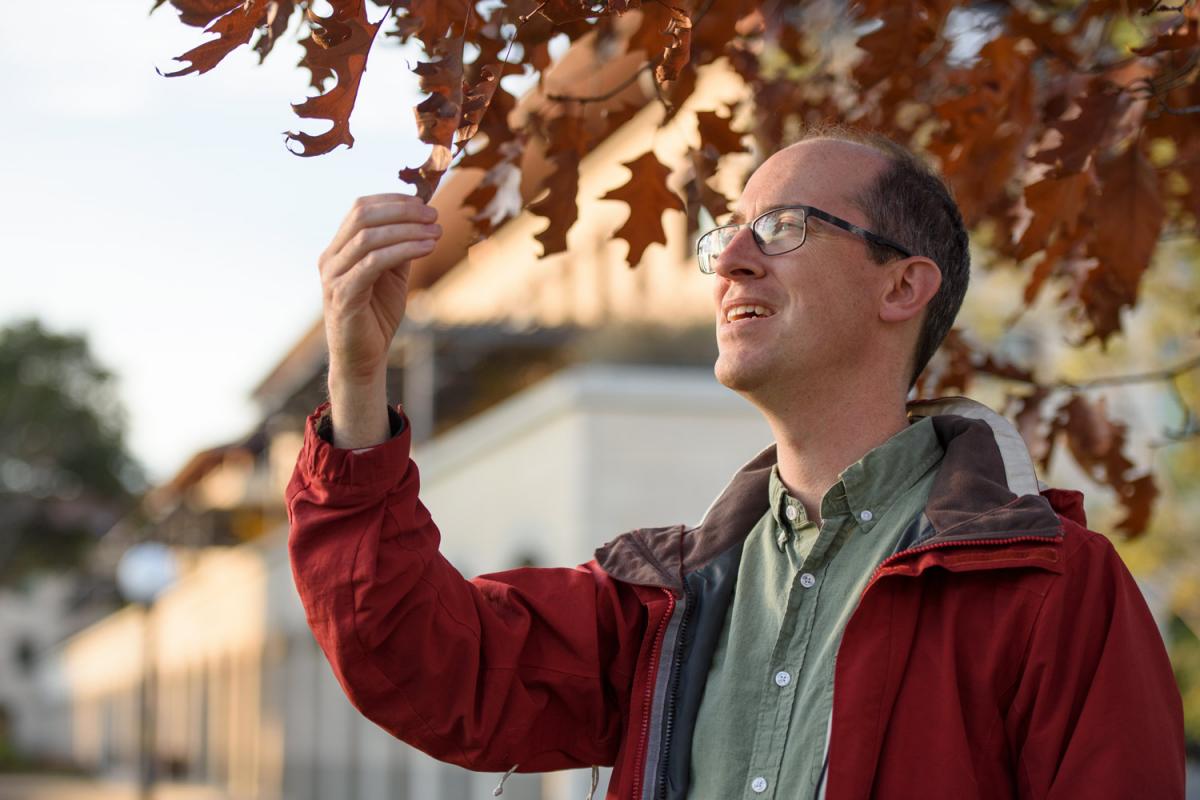Starting very small on the long path to rebuilding broken bodies
By Nathan Collins
When he was a boy, Alex Dunn, an associate professor of chemical engineering, looked at trees and wondered how they knew where to put their branches. It’s the sort of question biologists and laypeople have been asking for hundreds or even hundreds of thousands of years, Dunn said, but for much of that time, researchers didn’t have the tools they needed to find answers.
“There were some beautiful experiments in the 19th century trying to think about how living things came to adapt the form they have,” said Dunn, a member of Stanford Bio-X and a faculty fellow of Stanford ChEM-H. “That’s an obvious question to anyone who is interested in the natural world would happen upon.”
But answers remained elusive until the last 50 years or so with advances in genetics and molecular biology. Now, a new set of tools and ideas aimed at understanding how mechanical forces affect cells, genes and other biological systems – a field dubbed “mechanobiology” – is poised to further improve how we understand our bodies and one day, perhaps, how we rebuild them.
Tools and questions converge
Although the name mechanobiology is relatively new, the basic idea is not, said Beth Pruitt, a professor of bioengineering and of mechanical engineering who directs ChEM-H’s Interdisciplinary Postdoctoral Training Program in Quantitative Mechanobiology. More than a century ago, biologists observed that transplanting cells onto hard glass slides for observation under a microscope radically changed some of those cells’ basic properties, while others hypothesized that mechanical forces were responsible for guiding bone formation.
But, Pruitt said, researchers of the day really had no way of exploring those ideas in a particularly rigorous way. Today, she said, “I think there’s a convergence of tools and technologies that allow us to observe things and quantify biology in unprecedented manners.”
Her own lab, for example, has developed microscopic probes that make controlled movements over distances less than the width of a human hair and exert forces comparable to the weight of fruit fly. In collaboration with Miriam Goodman, a professor of molecular and cellular physiology, Pruitt’s lab is using those tools to study the sense of touch, but others at Stanford are using related tools to study everything from brain folding to heart disease.
A molecular front and back
Dunn has been exploring even older questions about the physical structure of living things – for example, why we have fronts and backs that look different from each other. “You started from a single cell,” Dunn said, yet somehow grow into something with a front and back and top and bottom. How?
In a recent paper published in the journal Science, Dunn; William Weis, a professor of structural biology and of molecular and cellular physiology; and their lab members Derek Huang and Nick Bax and postdoc Craig Buckley provide a hint in the form of a special protein that binds to the molecular scaffold that gives a cell physical structure. That protein, the team showed, actually attached more tightly when pulled from one direction than another, like a person pulling harder backward than forward. What’s more, the effect could potentially build up across the entire cell, giving it an asymmetry it would not otherwise have.
Understanding to engineering
Although part of the goal of Dunn’s research is to understand the rules, so to speak, for building animals, there is a more practical side to this as well: regenerative medicine, or engineering human stem cells to form tissues and organs to replace what’s been lost to accident or disease. Engineers can do a little bit of that now – for example, they’ve been able to build skin to help burn victims – “but our ability to build other really useful things is really primitive,” Dunn said.
Building other things – say, one day building a human heart in the lab – is an extremely tall order and one that will take decades, if not longer, to fill, but beginning to understand the basics of how animals build themselves up from single cells and the genes within, Dunn said, will bring scientists closer to that goal.
“What I’m told is that for subsonic flight, computer simulation is pretty much good enough now that you can design the plane, simulate it and it will behave pretty much the way you expect,” Dunn said. “That’s what I would like to see for tissue engineering by the time I retire.”
Dunn is also a member of the Cardiovascular Institute, the Child Health Research Institute and the Stanford Neurosciences Institute. Pruitt is also a member of Stanford Bio-X, the Cardiovascular Institute, the Child Health Research Institute and the Stanford Neurosciences Institute and a faculty fellow of Stanford ChEM-H. Weis is also the William M. Hume Professor in the School of Medicine, a professor of photon science, a member of Bio-X and of the Stanford Cancer Institute and a faculty fellow of Stanford ChEM-H. Goodman is a member of Bio-X and the Stanford Neurosciences Institute.
